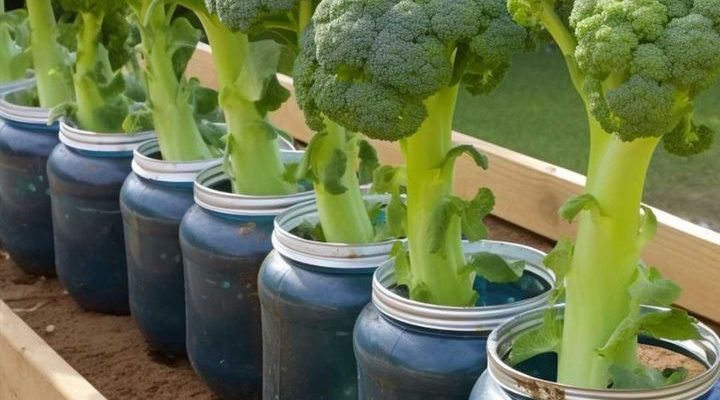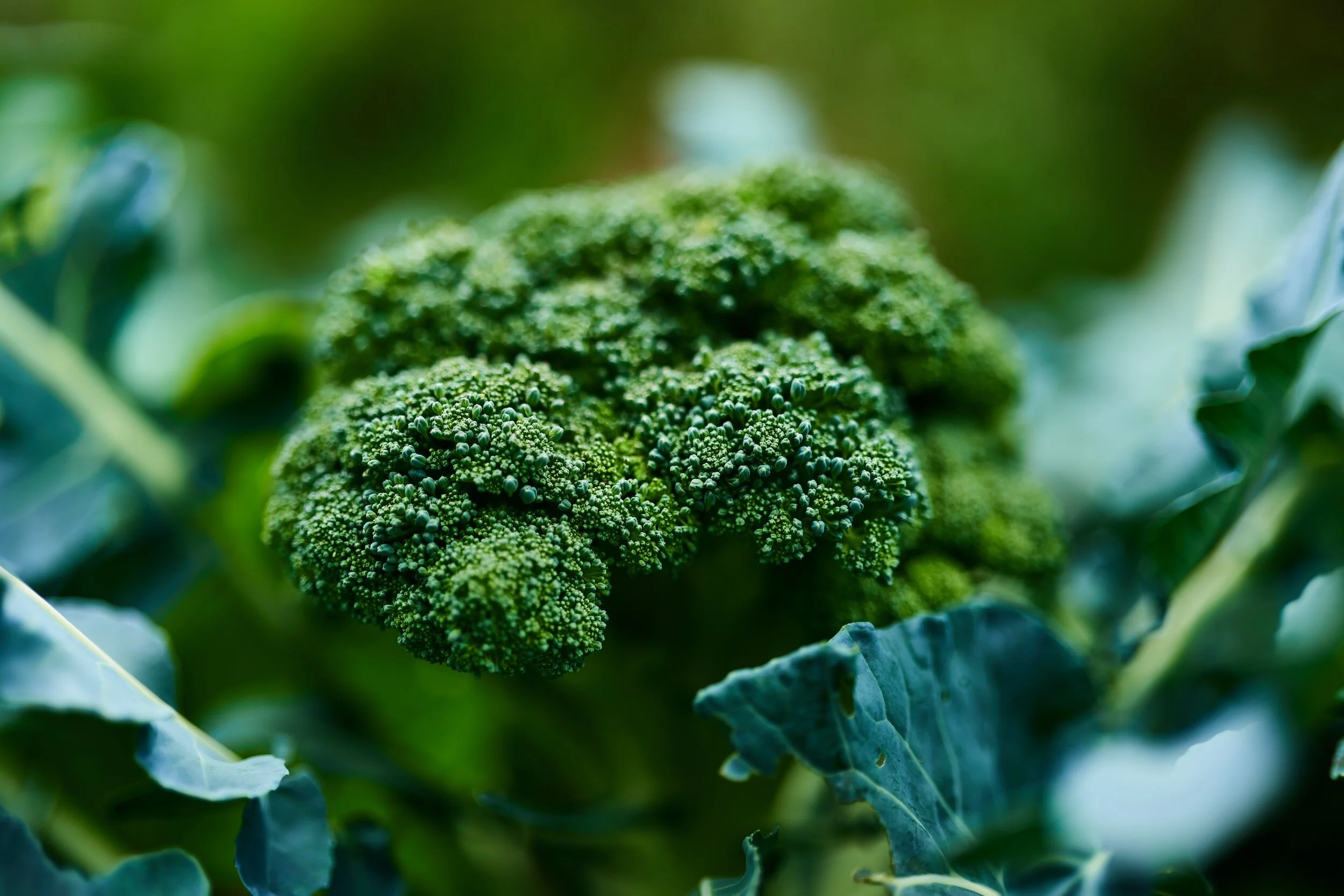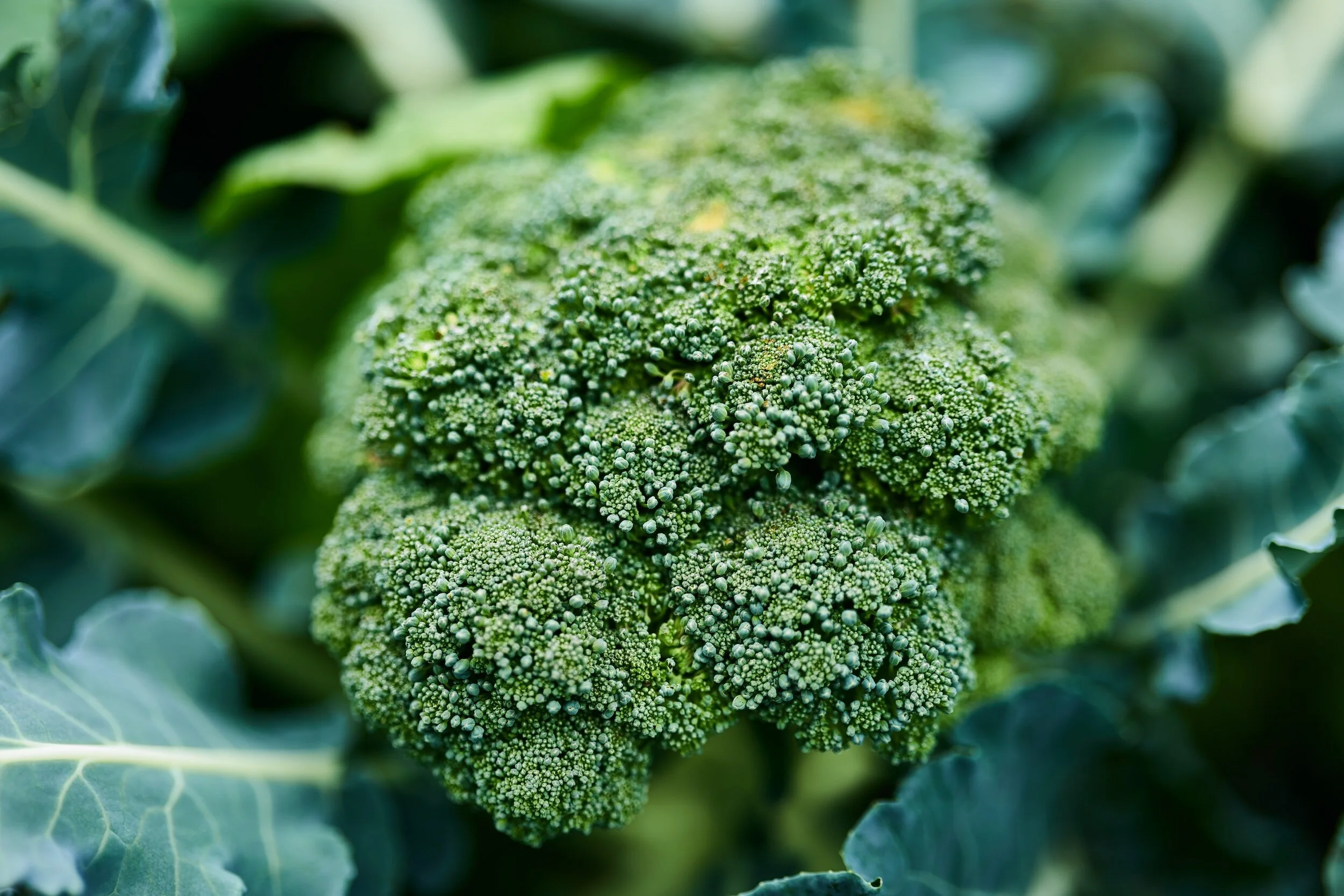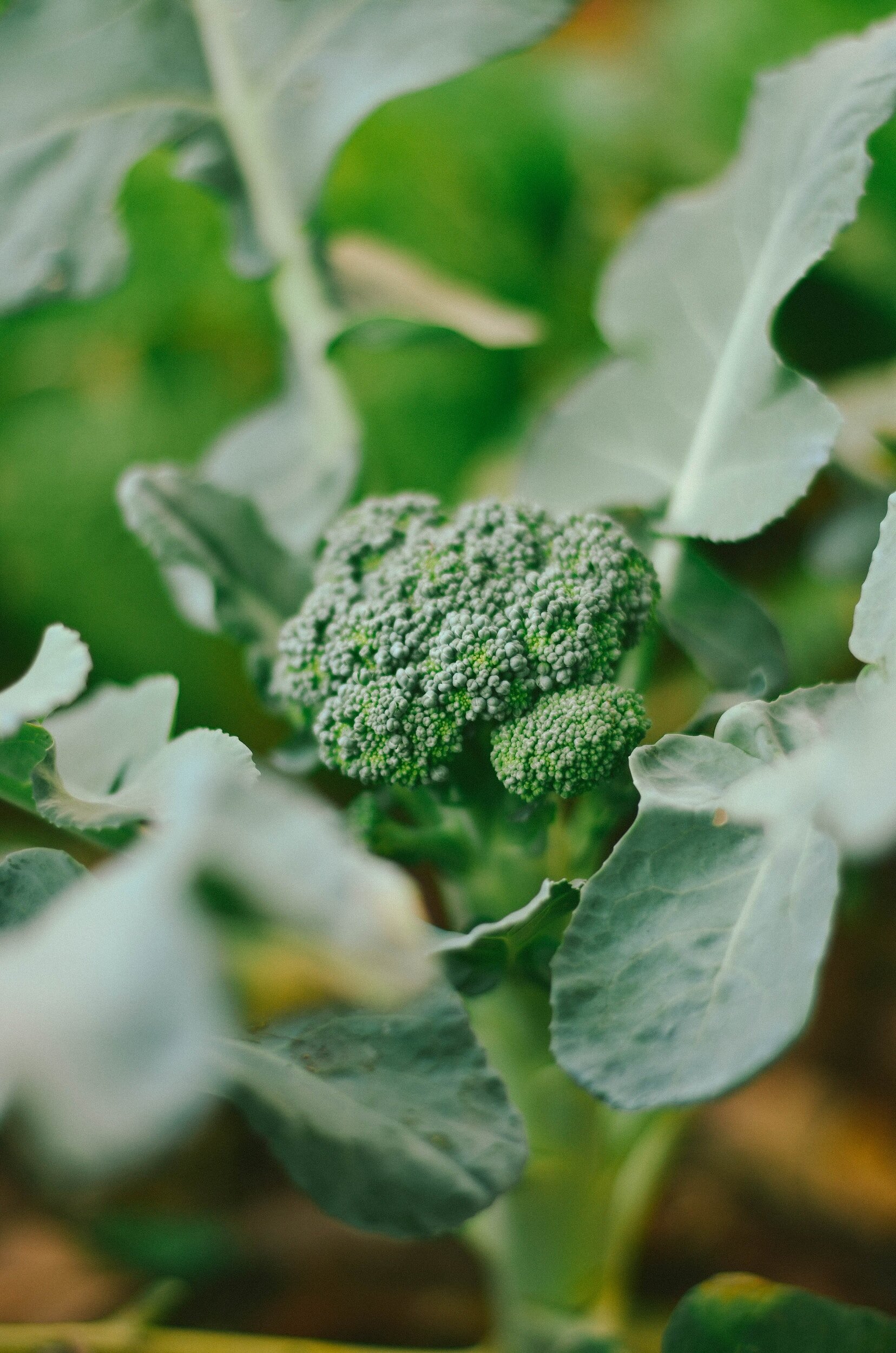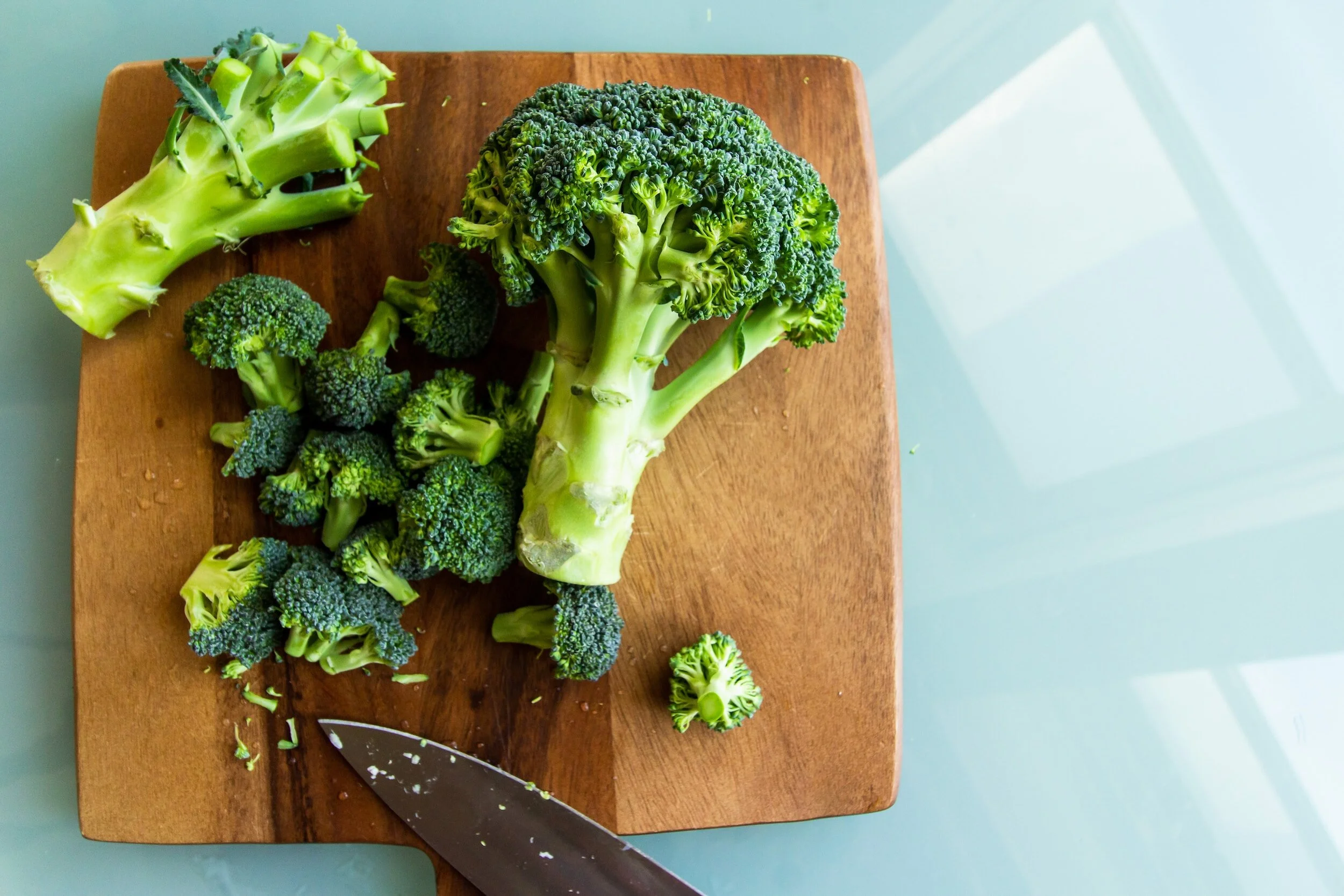Imagine stepping out onto your balcony or patio and plucking fresh, crisp broccoli for tonight’s dinner.
Sounds like a gardener’s dream, doesn’t it? With the power of container gardening, this dream can become a reality, no matter how small your living space might be.
In this comprehensive guide, we will explore the fascinating world of growing broccoli in containers, from the sprawling branches of the Royal Tenderette Hybrid to the petite sprouts of the purple sprouting variety.
Whether you’re a seasoned green thumb looking to expand your repertoire, or a beginner gardener trying to find your footing, this guide will provide the insights and tips you need to successfully grow your own pot of this nutritious, green bounty.
So let’s dive in, and before you know it, you’ll be harvesting your own home-grown broccoli right from your balcony, patio, or windowsill.
To learn more about growing vegetables in containers, check out my guides Growing Pumpkins in Containers: A Complete Urban Garden Guide and The Ultimate Guide to Growing Carrots in Containers.
In this article:
-
Understanding Broccoli and Its Varieties
-
Preparing for Planting
-
Sowing Broccoli Seeds and Transplanting Seedlings
-
Caring for Your Broccoli Container Garden
-
Harvesting Your Broccoli
-
UNDERSTANDING BROCCOLI AND ITS VARIETIES
There are several varieties of broccoli that you can grow in your container garden. A popular choice is the Royal Tenderette Hybrid.
This is a high-yielding variety that is well-adapted for container gardening. Other varieties include tenderstem broccoli and purple sprouting broccoli.
If you’re wondering, “Can you grow purple sprouting broccoli in pots?” or “How to grow tenderstem broccoli?”, rest assured that both can thrive in a pot or container.
ROYAL TENDERETTE HYBRID
Among the many varieties of broccoli, the Royal Tenderette Hybrid stands out, especially when it comes to container gardening. This type is an excellent choice for those new to growing broccoli in containers because of its compact growth habit.
The plants yield a central head that’s followed by several smaller side heads, extending the harvest period. The Royal Tenderette Hybrid is a fast-growing variety that can reach maturity in just 55 days, perfect for those eager to reap their home-grown harvest quickly.
TENDERSTEM BROCCOLI
Tenderstem broccoli, also known as Broccolini, is a hybrid between broccoli and Chinese broccoli. It’s favored for its tender stems that can be eaten whole, unlike traditional broccoli that has a thick, fibrous stem.
It is an excellent choice for containers because it matures quickly (about 50-60 days) and provides multiple harvests.
Here is the tenderstem broccoli I recommend growing:
SOWING BROCCOLI SEEDS AND TRANSPLANTING SEEDLINGS
When planting broccoli in pots, you have two options: growing broccoli from seed or transplanting broccoli seedlings. To grow broccoli from seeds in pots, start by planting the seeds indoors 6-7 weeks before your area’s last frost date.
The broccoli seedlings can then be transplanted outdoors after the last frost. If you’re wondering “how long does broccoli take to grow?” – it generally takes between 70-100 days from seed to harvest.
SOWING BROCCOLI SEEDS
Growing broccoli from seed can be a rewarding experience, as you get to watch the entire life cycle of your plants unfold from start to finish. To begin with, you’ll need to start your seeds indoors 6-7 weeks before the last expected frost date.
This head start is vital because broccoli is a cool-season crop and prefers to mature in cooler weather. Plant the seeds in a seed-starting mix in seed trays or small pots. Each seed should be planted about a half-inch deep and covered lightly with soil.
Make sure to keep the soil moist but not waterlogged. Within a week or two, you should see tiny broccoli seedlings beginning to sprout. Once the seedlings have developed two sets of true leaves (not counting the initial two leaves, known as cotyledons), they’re ready for transplanting.
For watering tips, check out my guide How Often to Water Seedlings.
TRANSPLANTING BROCCOLI SEEDLINGS
If you prefer to skip the seed-starting stage or if it’s already past the seed-starting timeframe in your area, you can opt to buy broccoli seedlings from a local nursery or garden center. Whether you’re transplanting your own seedlings or ones you bought, the process is the same.
After the danger of the last frost has passed, you can transplant your seedlings into their final containers.
Before transplanting, ensure your potting mix is thoroughly watered. Create a hole in the soil that is deep and wide enough for the seedling’s roots. Remove the seedling from its initial container, being careful not to damage the roots, and place it in the hole.
The stem should be buried up to the first set of true leaves. Firmly press the soil around the base of the seedling to ensure it’s secure.
Remember to gradually acclimate your seedlings to outdoor conditions before transplanting them. This process, known as hardening off, involves placing your seedlings outdoors for a few hours each day, gradually increasing the amount of time they spend outside over a week or two.
Sowing seeds or transplanting seedlings both offer unique rewards and challenges. Choose the method that fits best with your timeline, resources, and gardening preferences. With careful attention, both methods can lead to a bountiful harvest of home-grown broccoli.
CARING FOR YOUR BROCCOLI CONTAINER GARDEN
Regular watering, proper fertilization, and good pest management are vital for growing broccoli in containers. Water the plants regularly, keeping the soil consistently moist but not waterlogged.
Cabbage loopers, a common pest, can be managed with appropriate pest control methods. Companion planting, where certain plants are grown together for mutual benefit, can also be used as a natural pest control strategy.
Some great companion plants for broccoli include onions, garlic, and herbs like rosemary and thyme.
WATERING
Broccoli plants need consistently moist soil, so regular watering is critical, especially when growing broccoli in containers as they can dry out faster than in-ground plants. However, be careful not to overwater.
While the soil should be moist, it should not be waterlogged. Overwatering can lead to root diseases. Check the soil moisture regularly, and if the top inch of the soil feels dry, it’s time to water your plants.
For more watering tips, check out my guide How to Use Watering Globes.
FERTILIZING
Even with a rich potting mix, container plants will benefit from regular fertilization since nutrients can be washed out of the soil over time with watering.
You can use a balanced, water-soluble fertilizer, compost tea, or a slow-release granular fertilizer.
LIGHT AND TEMPERATURE
Broccoli prefers cooler temperatures and can bolt (or go to seed) quickly in hot weather. The optimal growing temperature for broccoli is between 65-75°F (18-24°C). As for light, broccoli plants need full sun, which means at least six hours of direct sunlight per day.
If you’re growing broccoli indoors, make sure to place them near a south-facing window or supplement with grow lights.
PEST AND DISEASE MANAGEMENT
Broccoli plants can be affected by various pests, including cabbage loopers, aphids, and flea beetles. Regularly inspect your plants for signs of pests or disease. Handpicking pests, using insecticidal soaps, or applying neem oil can help manage these issues.
PRUNING AND STAKING
Occasional pruning can help your broccoli plants stay healthy and productive. Remove yellowing leaves and any signs of disease or pest damage promptly. For larger broccoli varieties, you may need to stake the plants to prevent them from toppling over under the weight of their heavy heads.
Caring for your broccoli container garden may require regular attention, but the reward of fresh, home-grown broccoli is well worth the effort. Remember, every gardener encounters challenges along the way.
Stay patient, observe your plants closely, and adjust your care routine as needed, and you’ll be on your way to a successful harvest.
HARBESTING YOUR BROCCOLI
The right time to harvest your broccoli is when the buds of the head are firm and tight, just before the heads flower. If the buds start to separate and the yellow petals inside begin to show, harvest immediately.
Over-matured broccoli has a bitter taste. To harvest, cut the central head along with 5-6 inches of stem using a sharp knife.
Cut at a slant, as a slanted cut helps water run off the stem and prevents rotting if rain follows the harvest.
After the central head is harvested, continue to water and care for the plants. Many varieties, including the Royal Tenderette Hybrid and ‘De Cicco’, produce side shoots that will develop into smaller heads.
These can be harvested as they mature. When you’re ready to use your harvested broccoli, soak it in salty water or vinegar water for about 15 minutes to evict any lingering pests.
Growing broccoli in containers, from the initial planting to the exciting harvest, is a wonderful journey. By nurturing your plants throughout their life cycle and picking your broccoli at the peak of freshness, you’ll be rewarded with a nutritious, delicious crop that’s loaded with the satisfaction of having been grown by your own hands.
Whether you’re adding your home-grown broccoli to a stir-fry, roasting it for a side dish, or using it to make a hearty soup, every bite will remind you of the gardening journey that brought it to your table.
Container gardening offers a versatile, accessible, and highly satisfying way to cultivate your own vegetables, even in limited spaces. By understanding the specific needs of your chosen plants, you can turn a sunny balcony, patio, or even a well-lit indoor space into a thriving garden.
Growing broccoli in containers may seem challenging at first, but as we’ve seen, with the right preparation, care, and a little patience, it can be an extremely rewarding endeavor. From the moment you plant broccoli seeds or seedlings into their pots to the time you harvest broccoli, you’re in for a fascinating journey of growth and discovery.
Indoor gardening can be especially rewarding, offering fresh, home-grown vegetables regardless of the season or outdoor conditions. As with any gardening endeavor, remember that experience is the best teacher. You’ll inevitably face challenges along the way, but every hurdle overcome will make the success of your harvest even sweeter.
So, are you ready to embark on your broccoli container gardening journey? With your newfound knowledge, you’re well equipped to grow this nutritious vegetable, whether you’re a seasoned gardener looking to explore new methods or a beginner eager to roll up your sleeves and dive into the world of container gardening.
Learn more about container gardening with my guides:
-
Growing Pumpkins in Containers: A Complete Urban Garden Guide
-
The Ultimate Guide to Growing Carrots in Containers
-
Grow Tomatoes Anywhere with Grow Bags
-
Growing Lettuce in Containers: A Beginner’s Guide
-
